If you’re suffering from a chronic illness today, chances are this is not the first page you’ve stumbled upon for help. But what if we tell you this could be the last time you need to do so. If you’re waiting for a magic pill to cure your ill, let us cut the anticipation short for you – we have no magic pill. But the magic is that there is ONE cure for all your diseases and you don’t need a single pill for it! All you need to do is change your food.
Whether it’s Diabetes, back pain, knee pain, thyroid, constipation, acne, high blood pressure, PCOD, low energy, or even excess weight, when you follow this diet religiously and get your blood tests done after three months, you will not have that disease anymore. It’s not just an aspiration, it’s a promise that thousands of people across the world have proven through their healing journeys.
But before we give you this one diet plan to cure all your diseases, it’s important to first understand what’s wrong with your current food. Before we take in the right food we must stop dumping the wrong food inside our body. Otherwise, even the healthiest, most nutritious food in the world can’t protect you.
For example – if you accidentally put in diesel in a car that was meant for petrol, it won’t run properly. To make it work again, first you need to take out the diesel and then put in the petrol. Similarly our body, which is meant for fresh fruits and vegetables straight from nature, is constantly overfed with too many grains, oils, breads, snacks and packaged foods.
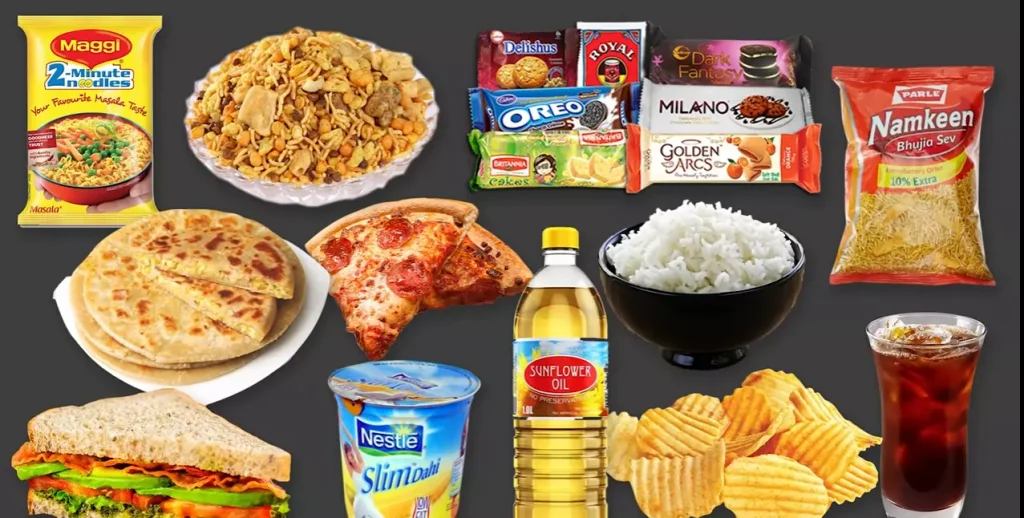
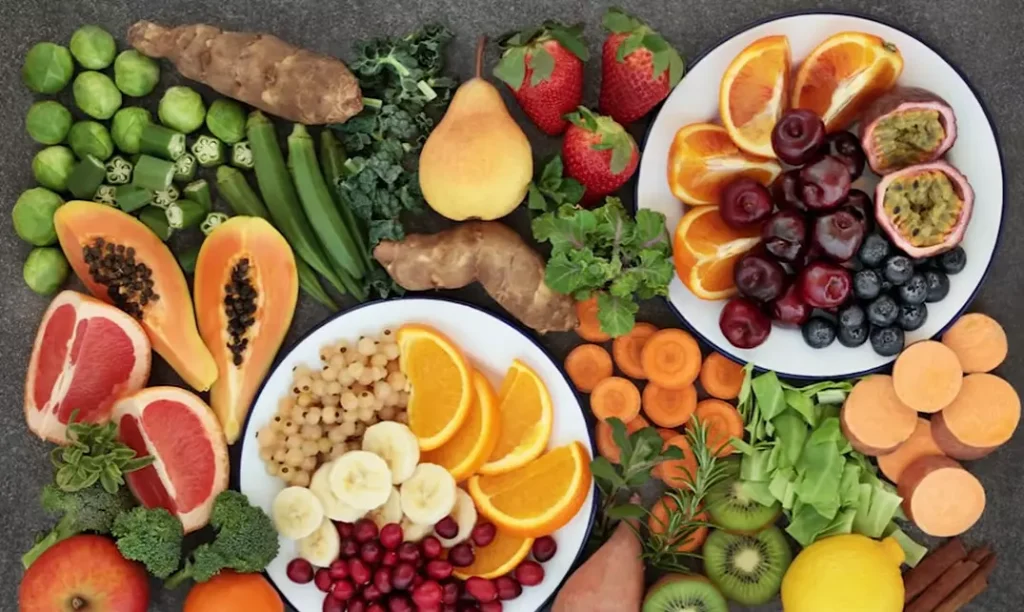
No wonder our body is not properly working and has all these diseases. But we don’t want to give you a scripted diet plan and say “this is what you have to eat for breakfast, lunch, and dinner!”
No! First, you must understand some basic principles about natural food if you want to be truly healthy. You need to look for four qualities in your food, which are called LWPW.
L is for living foods
If you bury something in the ground and leave it for a few days, it should grow into a plant, right? For example – if you take a lentil seed buried in the soil, after a few days, you’ll get a sapling. But if you plant a chunk of Maggi from your bowl or some chocolates, do you think they will ever yield something? Of course not! They don’t contain any life, any prana, and therefore, they can’t produce any life. That’s why we call them dead foods.
Living foods like fruits, vegetables, nuts, grains, seeds and sprouts are full of life energy, which are used to flush out the toxins sitting inside your body. In the Bhagavad Gita Chapter 17, do you know what Lord Krishna says about living food? He says that food should be eaten within three hours of being cooked because after three hours, it becomes Tamasik. It starts to lose the life energy or the prana inside.
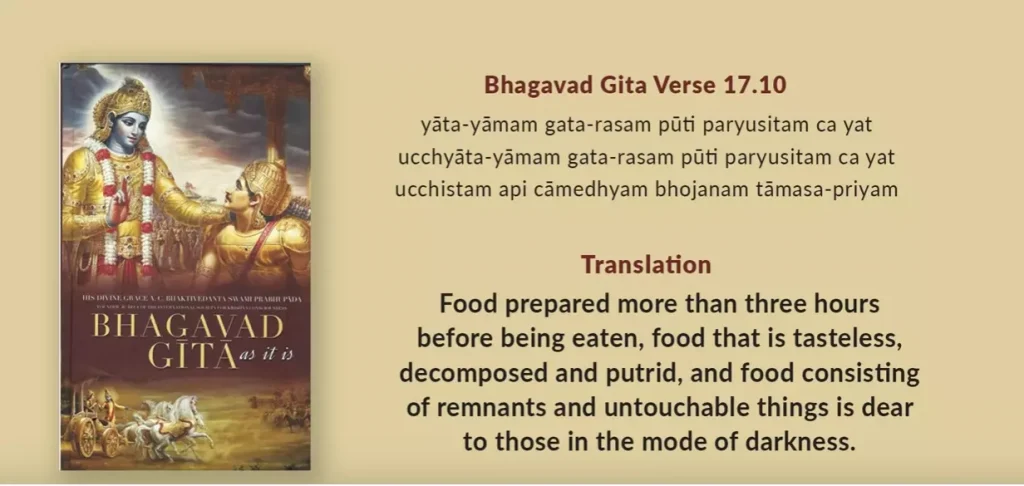
That’s why in the yogic culture, they don’t eat any sabzi or rice or chapatti if it has been kept for more than three hours. On the other hand, foods stored in packets, bottles, tins and cans are slathered with synthetic chemicals so that they don’t appear to be stale or smell bad. These chemicals might increase the shelf life of these products, but they decrease the shelf life of our own bodies.

So we have to start by cutting out all these dead foods from our life. Instead of munching on biscuits, munch on fresh coconut slices. Instead of popping soda cans, switch to juicing fresh veggies or pop some coconut waters. Just eat food that is fresh and full of life!
W is for wholesome
Look, Mother Nature knows best. She does not make mistakes. There’s a reason why she hung dates on trees and not sugar. There’s a reason why she gives us all potatoes, but not potato chips. All foods that come directly from plants or trees of the earth are wholesome. They are not processed with any chemicals.
Nature has done a lot of planning before making every food she has given. Each food item has a specific ratio of protein, carbs, fats, vitamins and minerals, so that we humans can easily digest and eliminate it. If we start fragmenting them, by consuming only a part of it or stripping away its outer layers, or by squeezing out only a small part of it, we totally mess up Nature’s original design.
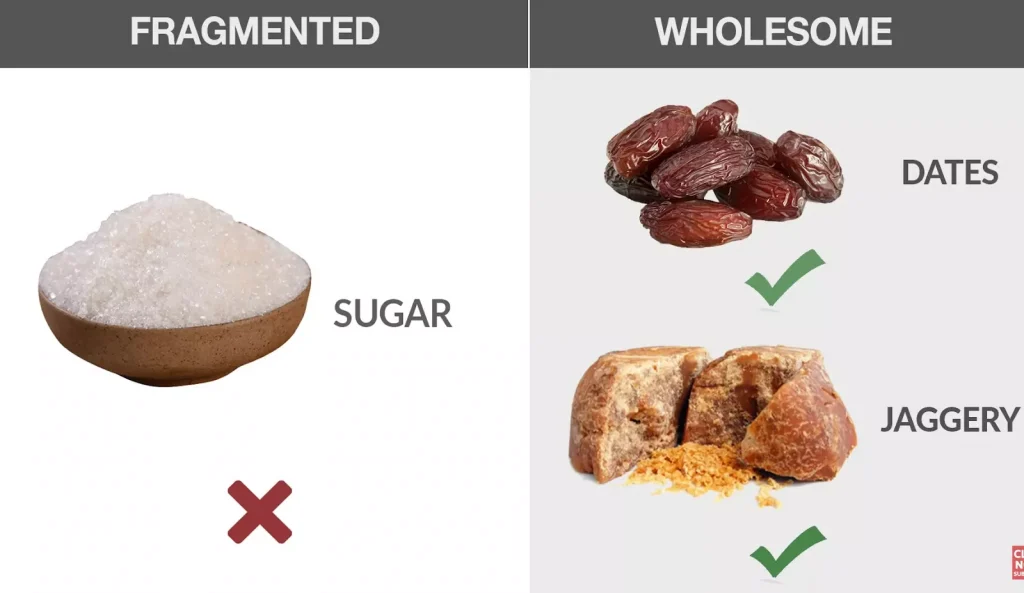
For example – when we remove the bran from rice, it becomes white rice. The digestive mechanism of the rice lies in this outer bran that we so conveniently just decided to throw out. Similarly, we should eat dates or jaggery instead of sugar. We should eat whole coconut instead of coconut oil. We could eat the whole olive instead of having olive oil. When eating wheat, eat only wheat with the outer layer intact, which we call choker in Hindi.
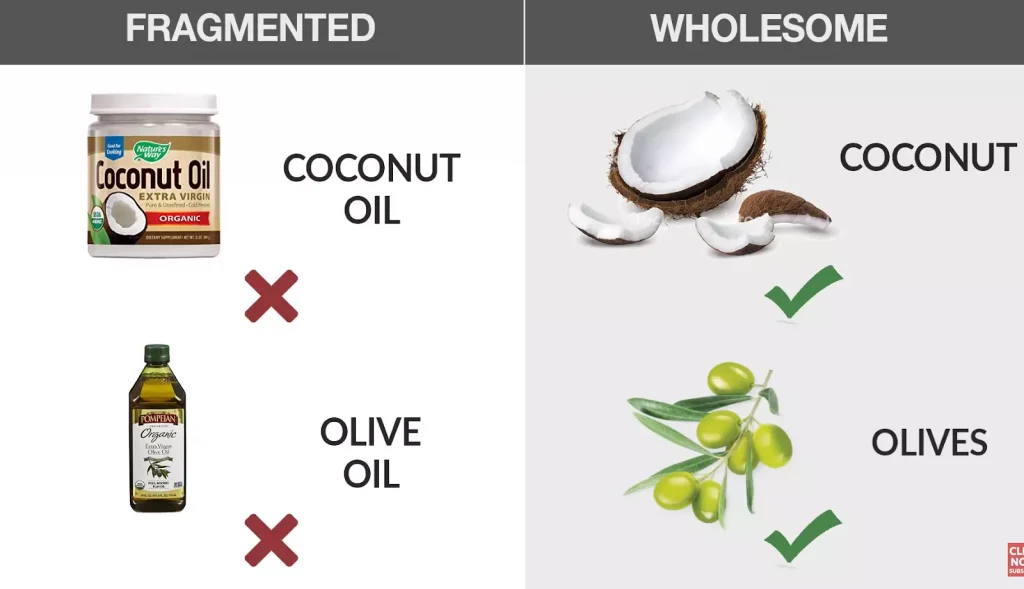
P is for plant-based
Eat food that comes from plants. No meat, fish, eggs. Why? Because Nature has not designed our body to consume these animals. Even milk and milk products must be avoided as they are difficult to digest, especially if you’re recovering from a disease. Pure cow milk is very good for athletes or small children whose height is growing, but not for us who spend eight hours a day in front of a computer screen.
By nature, one glass of milk is a complete meal on its own. But in this age of rampant adulteration, finding pure cow milk is one of the biggest challenges.

The good news is that there’s a substitute which can give you all the same nutrients, protein and calcium. In fact, it’s just as nutritious as a mother’s milk for her baby. We’re talking about coconut milk. You can watch our video on the preparation method and find delicious recipes using coconut milk on our YouTube channel.
W is for water-rich
Look there are two kinds of foods – water-rich and water-poor. Water-rich foods include fruits such as watermelon, papaya, grapes, oranges, juicy vegetables like tomatoes, cucumber, leafy greens, bottle gourd. Water-poor foods include grains like rice, wheat, chapatti, dal, seeds and starchy vegetables like potatoes.
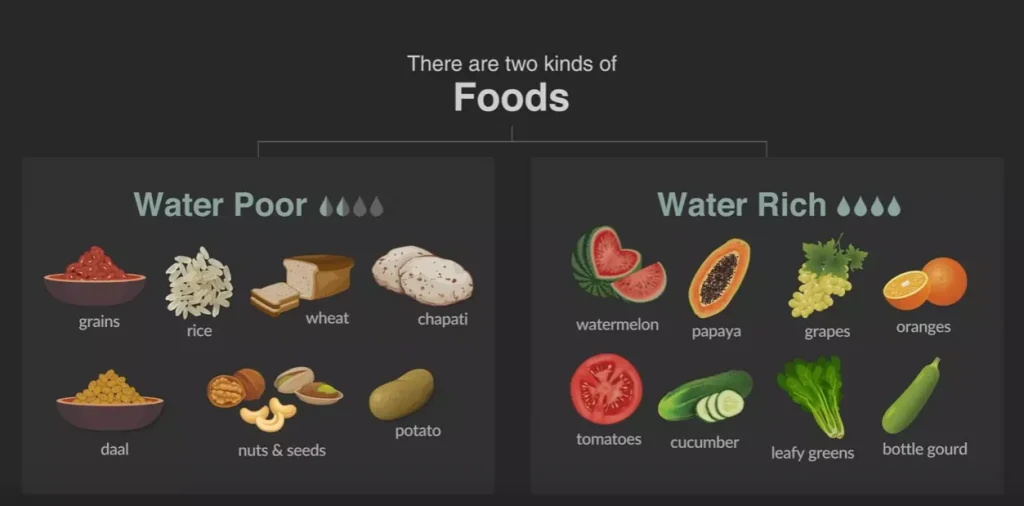
If you put it in a juicer and a lot of juice comes out of it, then you know that it’s water-rich. Have you ever put a chapati or rice in the juicer? No! Because you know that there’s no juice in it. It’s a water-poor food. Now 70% of your body is water and 30% is bones, muscles and mass. So naturally, 70% of your diet should be composed of water-rich food like juices, fruits and vegetables. And 30% of your diet should consist of water-poor food like grains, cereals, nuts and seeds.
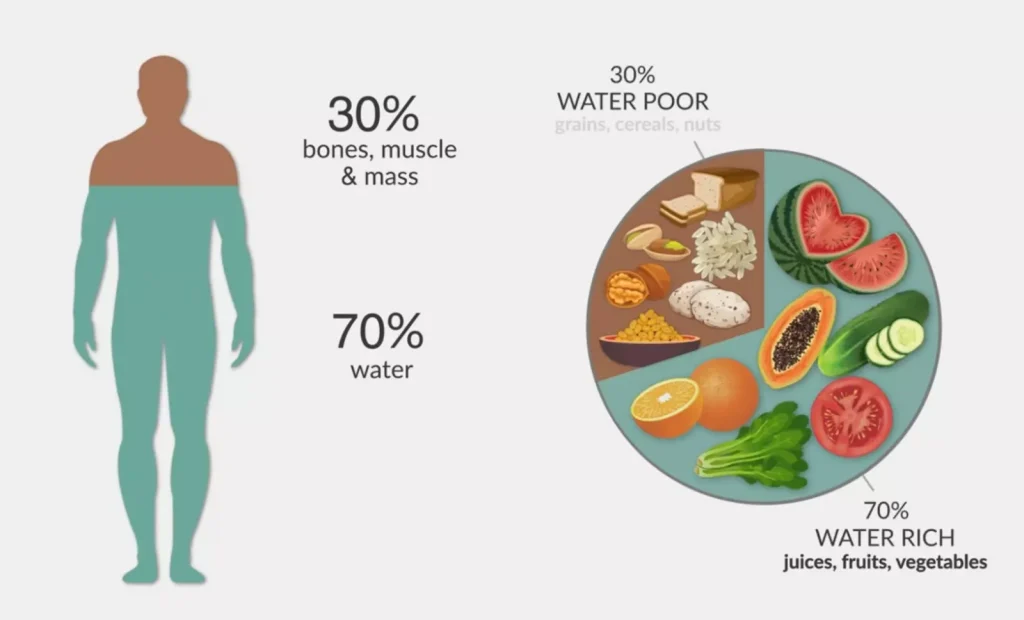
Funnily enough, most of us eat in the exact opposite ratio. We eat grains thrice a day and as a result we’re drying up our bodies inside.
So in summary, the 4 key principles of the Satvic food plan are eating living, wholesome, plant-based and water-rich foods.
Now that you know what to eat, let’s move onto how you should plan your meals throughout the day to make it easier for you. We suggest having five meals in a day – a morning detox juice, breakfast, lunch, a mid-meal, and dinner. We have tried to establish timings that are generally suitable for most people, but feel free to adjust them according to your routine and your schedule.
Morning detox juice
You can start your day with a fresh glass of detox juice after waking up in the morning; let’s say 8:00 a.m. For this, we recommend the juice of a very special vegetable – ash gourd juice. It’s also known as the best juice for weight loss. When this juice enters your body, it starts to suck in all the toxins like a sponge. And when it exits your body, it carries with it all the accumulated toxins and the garbage sitting inside.
It’s light green from the outside and white from the inside. Simply peel off the skin, take out the seeds and cut it into small pieces. Now blend them without adding any lemon, salt or pepper. Your juice is ready! Don’t worry, it’s not bitter. It almost tastes like water. If you want, you can mix it with 50% of coconut water. If it’s not available in your region, you can simply have coconut water or drink the juice of any water-rich vegetable like cucumber or bottle gourd.
If you want to experience the full power of juicing and give your body a reset, a juice fast is a great idea. Click here to sign up for our upcoming 3-day juice fast workshop.
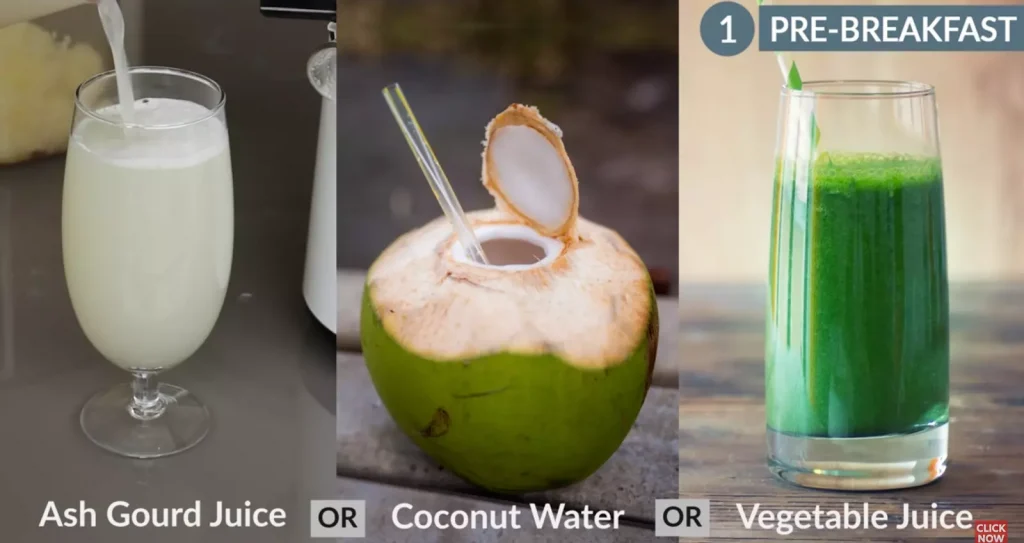
Just ensure not to eat anything for the next two hours to avoid interrupting the intense cleaning work of the juice.
Breakfast
At about 10 am, it’s time for breakfast. You can have a big bowl of fresh seasonal fruits. It can be any fruit you like, preferably water-rich fruits, so avoid bananas. You can eat any combination of fruits that you like and eat fruits that are always local to your country. Always eat seasonal and regional fruits.

Lunch
At about 1 pm, you can have your grain meal with rice or chapathi along with sabzi. The chapathi that we suggest is a special chapathi. It’s much easier to digest. Instead of using 100% wheat flour, it’s made of 50% wheat flour and 50% vegetables. So you can make any vegetable chapathi – cucumber chapathi, beetroot chapathi, spinach chapathi, bottle gourd chapathi. So this way even if you are eating 2 chapatis, you are eating the grain or the wheat of only one chapathi. With chapatti comes the sabzi, which is also very different. Instead of using oil, we use fresh grated coconut. Instead of using spicy masalas, we only use fresh Satvic herbs. We have also shared the links for preparing both the Satvic chapathi and sabzi here.
Another important thing – if you eat one chapathi, have two bowls of sabzi. If you eat two chapathis, have 4 bowls of sabzi. The idea is to eat more and more vegetables and less and less grains.

But what about your dal-roti and rajma-chawal? Here’s the thing – Satvik foods like grains and vegetables are a winning combination for your digestion, but grains mixed with lentils, or grains mixed with other grains, are really hard to digest and eliminate from your body. So these combinations are to be avoided, especially for those who are reversing a disease. They are simply unsuitable for our stagnant modern lifestyles.
Mid-meal
The 3-4 pm window is often known as the chai-biscuits or coffee-chiwda break for most people today. But if you’re feeling hungry, why not replace it with something that actually nourishes and energizes you? Have a fresh glass of vegetable juice or some coconut water. Instead of munching on snacks, you can have coconut slices (about 2 to 3 pieces).
Dinner
Ending your day with a Satvic soup or salad is the perfect way to ensure you start the next morning with an energetic bang. No, don’t just toss up a few veggies and use store-bought dressings for your salad.
Choose only fresh seasonal vegetables and prepare homemade dressings from scratch. You can also superpower your salad with our favourite superfood – sprouted seeds. What sprouts are best for you? We recommend vegetable sprouts like radish, clover, fenugreek or alfalfa sprouts as they are most easily digestible and available in India You can get all these 4 sprout types in our sprouting kit on our website. You can find out more about We have shared some delicious salad bowl recipes and homemade dressings in our Satvic Food Book. Just don’t add any grains to your salads. We limit our grain consumption to one meal a day.
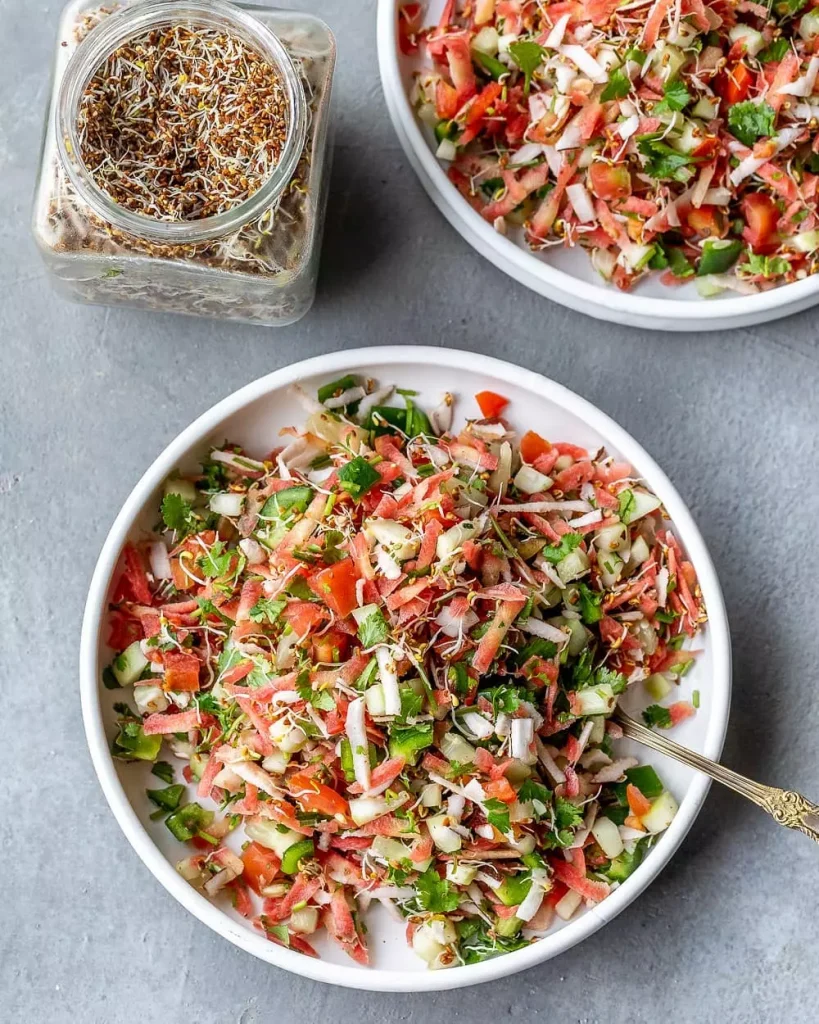
When you start eating like this, you won’t have to wait for a test report 3 months down the line to tell you that you’re feeling better. You’ll start seeing results within the first week itself. You’ll wake up feeling lighter, bustling with energy and increased mental clarity. And when you see your weight dropping on the weighing machine every morning and your readings are under control without medicines, then there’s no going back.
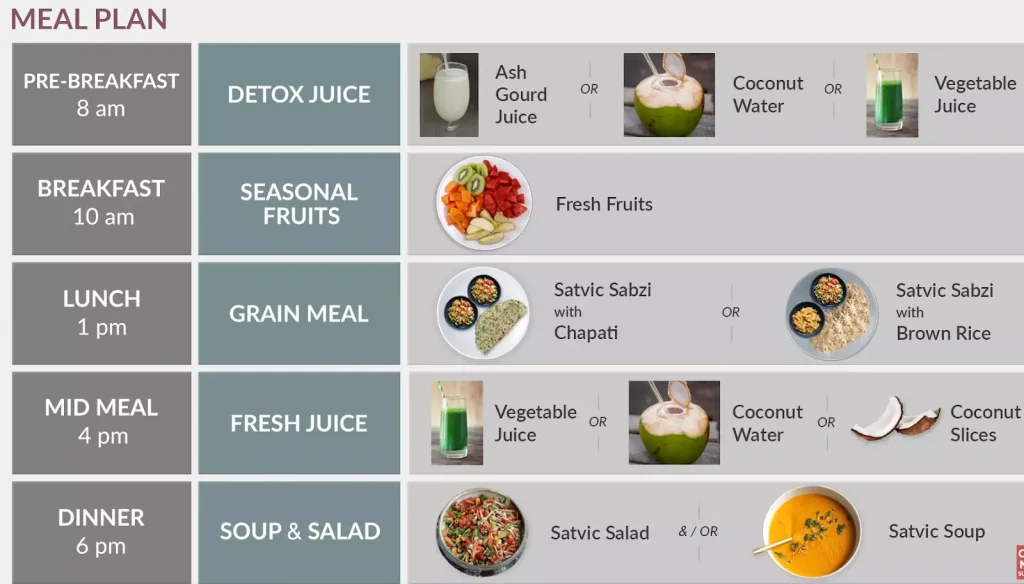
But eating Satvic is not just about eating to fight diseases. This is a lifestyle meant for everyone who wants to maintain their health too. We even have a special plan for children, athletes, pregnant women, and those who do a lot of physical activity.
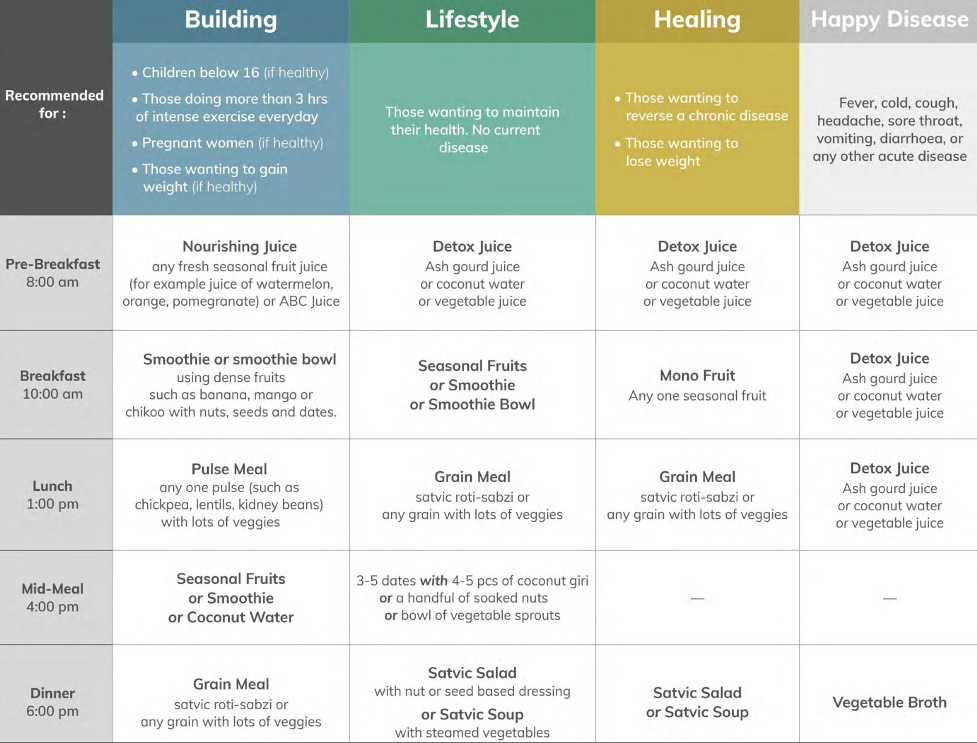
At the end of it, you must realize this is not a diet plan, but a way of life. It’s a way of living and eating the way that Mother Nature has designed the human body. It’s our dream to live in a world where our food becomes our medicine and we can be our own doctor.
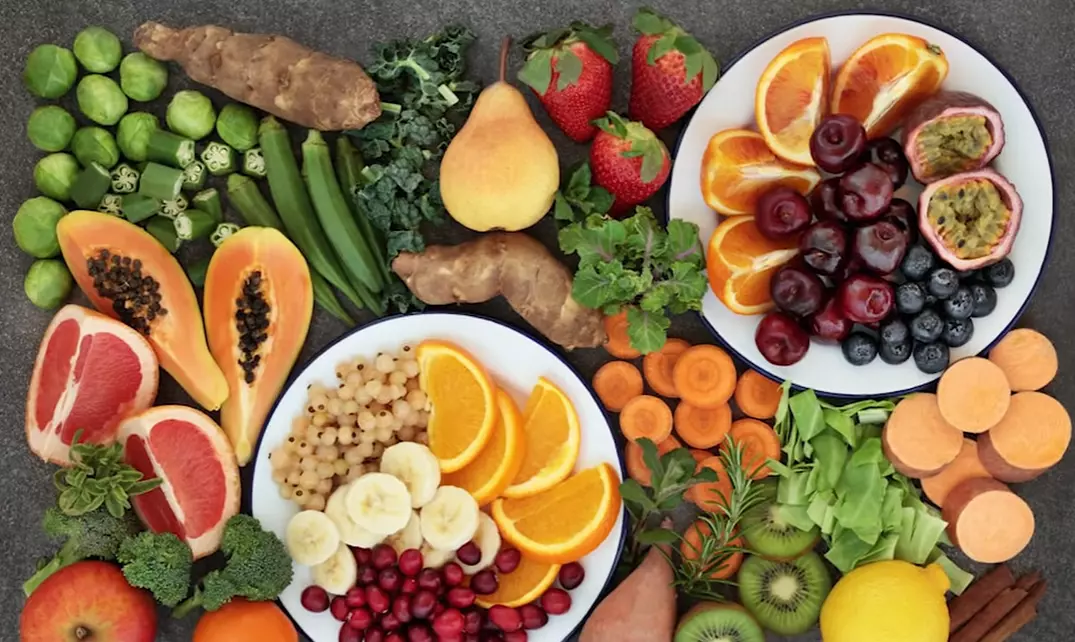




2 comments
Everyone wants a healthy and fit body. But staying to routine gets tough. Here you will share a suitable ways to lose weight naturally. Thanks for sharing
Happy to help 🙂